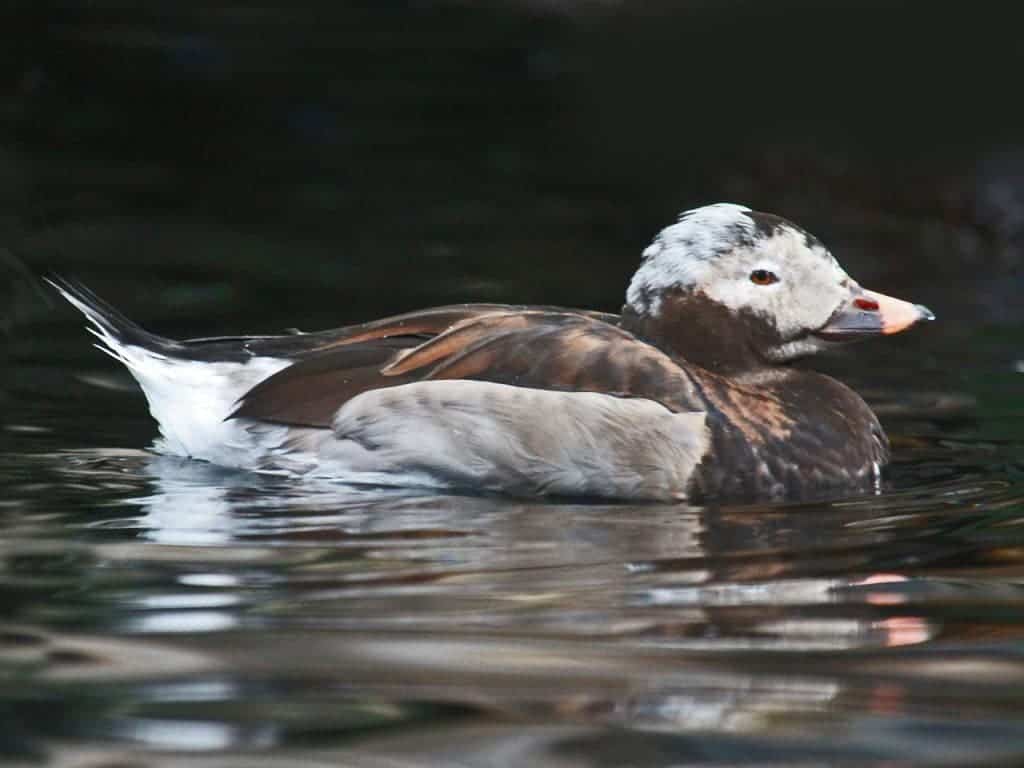Imagine you’re a long-tailed Duck (Clangula hyemalis). You see a small, delicious fish in the water and you dive towards it, looking for a tasty meal. But just as you catch it in your beak, you hit a wall of near-invisible netting, meeting the same fate as the fish you’re trying to eat.
Far from being a hypothetical scenario, this is a danger that many seabirds face every day — because of something gillnets.

Gillnets are vertical sheets of netting held up by floating buoys that trap passing fish by the gills. They’re made of monofilament nylon that is practically invisible underwater. This material is widespread in fisheries around the world, and particularly popular among small-scale fishers because of its low cost.
Unfortunately, these nets pose a high risk of entanglement to many marine animals, including diving seabirds foraging nearby. To date, a universally effective solution has not been identified to mitigate bycatch in gillnet fisheries, despite an estimated 400,000 seabirds being by-caught in gillnet fisheries each year (and that’s a conservative estimate).
Studies suggest that technical measures, such as LED lights, can reduce seabird bycatch in gillnet fisheries. However, these studies only focused on a few species in specific geographical areas. The universal best practice to minimize bycatch is to spatially or temporally exclude gillnet fishing from specific areas or at specific times, but fishermen don’t really like that as they feel it could limit their yield.
It’s time for a new approach, then.
Researchers went back to the drawing board, asking simple questions: What do dive seabirds see? How do they forage? What do they avoid? With the help of animal behavioral ecologists and tracking data, they realized the answer could lie in preventing birds from coming near the gillnets at all.
An unexpected solution
A team of bird conservation researchers in the United Kingdom developed a floating buoy that displays large, obvious looming eyes and that can be seen from a long way off. As the buoy bobs in the water, the tall pole sways conspicuously, and the eyes rotate in the wind. They called it the Looming-eyes buoy (LEB), or simply “The Bobby.”
The looming eyes have been shown to trigger “collision neurons” in bird brains that prevent them from running into objects or each other, the researchers explained. They adapted the size and contrast of the cartoon eyes to be detectable by Canada geese (Branta canadensis), which have some of the worst eyesight of all seabirds.
Since last year, researchers have been working to test the effect of this new device on birds out at sea. They did trials in the Küdema Bay protected area, off the Estonian island of Saaremaa. The bay attracts large concentrations of wintering seabirds, including the Long-tailed Duck and Steller’s Eider (Polysticta stelleri).

The researchers counted birds for four hours a day, before and after placing the LEBs during the 62-day study period. The number of long-tailed ducks dropped by up to 25% within a 50-meter radius of each LEB. And the effect was long-lasting. Only after two or three weeks, the birds began to swim closer to the buoys.
“There have been many, many attempts to try to find a solution. Nothing seemed to work across different fisheries and species, so we wanted to try something different, and explore something that will work above the water, instead of underwater,” Yann Rouxel at the BirdLife International Marine Programme in the UK, told The Guardian.
It’s a simple and cheap solution that could realistically be deployed to reduce bird bycatch and save scores of them every year.
The findings of the LEB tests were published in a paper in the journal Royal Society of Open Science.


